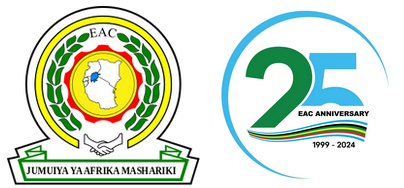HIV & AIDS Unit
Throughout East Africa, the HIV/AIDS pandemic has resulted in shortened life spans, increasing numbers of orphans, fewer people in the age cohort which can support both the older and younger dependent populations, as well as changes in household size and household structure.
Workers affected include both males and females, and particularly those who have advanced education or technical training.
Rural and urban areas have not shown the same patterns of changes, especially with regard to gender roles. Poverty, minimal health facilities and lack of education have all been blamed for the on-going changes.
Changes in household composition and in cultural practices are evident. Some can be attributed directly to the increased mortality and morbidity, but at the same time some have grown out of increasing global connectiveness, both in communication and transportation, as modernisation with increasing urbanisation and industrialisation has begun to spread throughout less developed areas.
The EAC HIV & AIDS Unit is responsible for managing activities related to HIV & AIDS. The Unit provides leadership, coordination and management of EAC’s regional response to HIV & AIDS, guided by the EAC Regional Integrated Multi-Sectoral HIV & AIDS Strategic Plan (2007–2012).
This strategic plan is under implementation with support of the International Cooperating Partner HIV & AIDS Group consisting of the Swedish International Development Cooperation Agency, Irish AIDS and UNAIDS.
The programme is managed by the EAC Secretariat and implemented through the National AIDS Control Councils, National AIDS and STI Control programmes and the Ministries of Health in the EAC Partner States.
The goal of the HIV & AIDS Programme is “to reduce incidence of HIV infection in the East African region in order to secure sustained socio-economic development in the EAC region”.
The programme aims “to attain a healthy population and mitigate the impact of HIV and AIDS among the infected and affected population through coordinated and harmonised efforts in East Africa”.
Strategic Objectives
The EAC HIV & AIDS Programme had eight (8) strategic objectives namely:
- To enhance the institutional capacity of the EAC Secretariat so as to secure effective implementation of regional and national responses to HIV & AIDS;
- To mainstream HIV & AIDS in the EAC Organs, Institutions and Sectors;
- To improve the effectiveness of interventions through the harmonisation of EAC Member States’ HIV & AIDS protocols, policies, plans, strategies and legislation;
- To improve the design and management of regional responses to HIV & AIDS through the generation of and easy access to strategic information and knowledge on the epidemic;
- To scale-up regional and national responses to HIV & AIDS through the strengthening of political leadership and commitment towards addressing the epidemic;
- To consolidate effective partnerships among strategic partners both within and outside the EAC region in response to HIV & AIDS;
- To improve the work environment by developing and operationalising an EAC Workplace Policy on HIV & Aids; and
- To strengthen regional responses to mitigate the effects of vulnerabilities related to HIV & AIDS that result from internal and cross-border population mobility within the East African region through harmonised responses and interventions by various multi-sectoral stakeholders.
The programme has also put its focus on the following key issues:
- Harmonisation of EAC Partner States HIV & AIDS policies, laws, protocols, guidelines and strategies.
- Accelerating responses to reduce spread and mitigate the impact of HIV & AIDS in the cross-border areas, with focus on the mobile populations and other most-at-risk populations.
- Generating and sharing information and knowledge on HIV & AIDS in the region to influence HIV & AIDS programming, policy and change in the EAC region.
